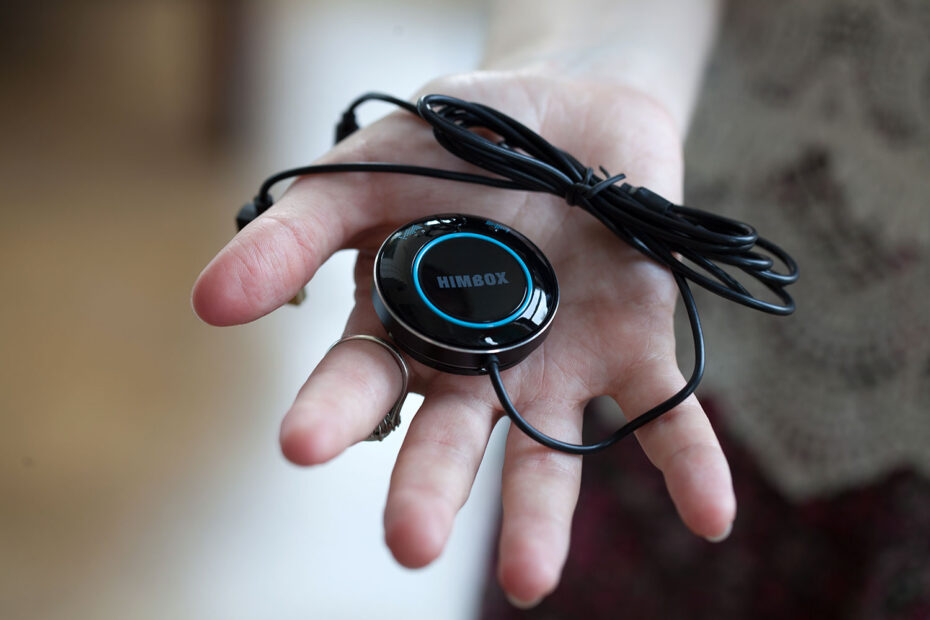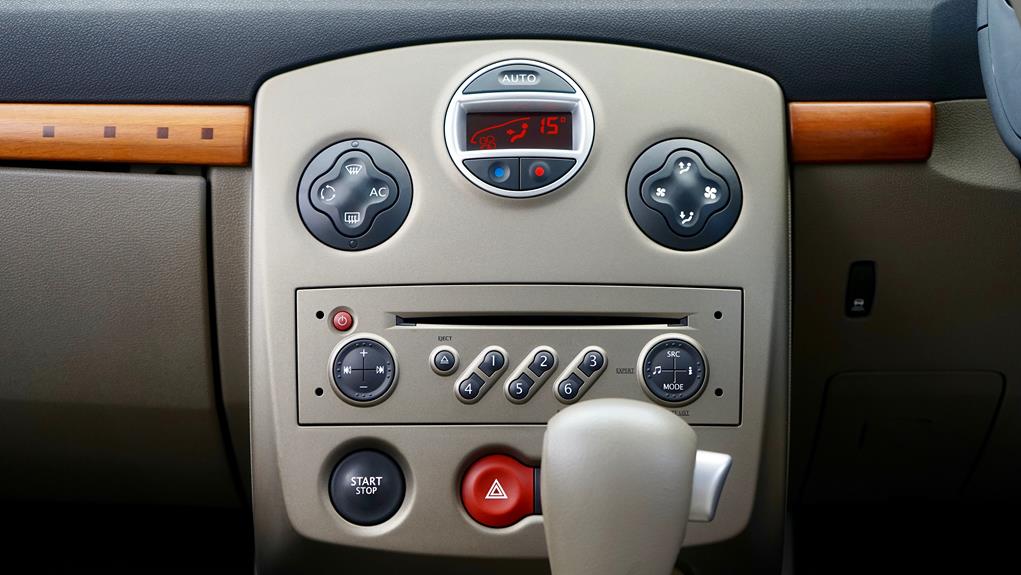To get aux in an old car, you can use an FM transmitter or install an aftermarket car stereo with an auxiliary input. This will allow you to connect your audio devices and enjoy your favorite music while driving.
If you have an older car without an auxiliary input, you may feel limited in terms of audio options. However, there are a couple of simple solutions that can help you enjoy your favorite tunes on the road. By using an FM transmitter, you can wirelessly connect your phone or mp3 player to your car’s stereo system.
Another option is to install an aftermarket car stereo that features an auxiliary input. This will require a bit more effort but will provide a more permanent and high-quality solution. With these options, you can upgrade your car’s audio capabilities and make driving more enjoyable.
Why You Should Get Aux In Your Old Car
Old cars often lack modern features like USB ports, Bluetooth connectivity, and aux inputs, leaving you stuck with limited audio options while on the road. However, there are several compelling reasons why you should consider getting aux in your old car. In this section, we will explore these reasons in detail, including better sound quality, access to a wider range of audio options, and enhanced convenience while driving.
Better sound quality
One of the main advantages of getting aux in your old car is the improved sound quality it offers. Most older car audio systems are equipped with outdated technology that may produce low-quality sound or have limited frequency response. By adding an auxiliary input, you can connect your smartphone, iPod, or other audio devices directly to your car stereo system, ensuring that you enjoy high-quality sound while driving. This means you can listen to your favorite music, podcasts, or audiobooks with crystal-clear clarity, enhancing your overall driving experience.
Access to a wider range of audio options
Having aux in your old car provides you with access to a wider range of audio options beyond traditional FM/AM radio. With an auxiliary input, you can connect your mobile device or MP3 player and have the freedom to play your personal music library or stream music from popular apps such as Spotify, Apple Music, or Pandora. Additionally, you can connect other audio sources like GPS devices or audio books players, giving you more versatility in your car entertainment choices. Whether you want to listen to your favorite playlist or catch up on a thrilling podcast, aux in allows you to do so without limitations.
Enhanced convenience while driving
Another significant advantage of getting aux in your old car is the enhanced convenience it offers. With an auxiliary input, you can easily control your audio playback directly from your mobile device, allowing you to adjust the volume, skip tracks, or pause/play without needing to reach for your car stereo controls. This not only ensures a safer driving experience but also makes it more convenient for you to manage your audio while on the road. Whether you’re on a long road trip or simply commuting to work, having aux in your car adds a new level of convenience and control to your audio experience.
In conclusion, getting aux in your old car is worthwhile for several reasons. Not only does it improve sound quality, but it also provides access to a wider range of audio options and enhances convenience while driving. By adding this simple upgrade to your car’s audio system, you can transform your driving experience and enjoy your favorite music, podcasts, or audiobooks with superior sound quality and ease.
Assessing Your Car’S Compatibility For Aux
Before diving into the exciting world of AUX connectivity for your old car, it’s essential to assess its compatibility. While many older vehicles may not come equipped with built-in auxiliary inputs, fear not – there are ways to bring your car into the 21st century. This article will guide you through the process of determining if your car stereo system can support AUX, and help you bring your music experience back to life.
Checking the available audio options
In order to assess your car’s compatibility for AUX, the first step is to identify the available audio options. This can typically be done by examining the functionality of your car’s stereo system. Here are some common audio options you might come across:
- AM/FM radio: Standard in most vehicles, an AM/FM radio might indicate the absence of an AUX input.
- CD player: If your car has a CD player, it could be a sign of AUX input availability since some models feature both.
- Cassette player: While less common nowadays, the presence of a cassette player might indicate your car’s age and the absence of an AUX input.
By understanding the types of audio options present in your car, you can get a better idea of its potential compatibility for AUX.
Identifying common input ports
Once you’ve checked the available audio options, the next step is to identify common input ports that can potentially support AUX connectivity. Here are some common input ports you should look out for:
- CD changer port: Some older car models feature a CD changer port, which can often serve as an AUX input by using specific adapters.
- USB port: While USB ports are more common in modern vehicles, certain older car models may include them, providing an avenue for AUX connectivity using a USB-to-AUX adapter.
- Auxiliary input port: The ideal scenario for AUX connectivity is a dedicated auxiliary input port. This port is specifically designed to connect external audio devices like smartphones or MP3 players.
By identifying these input ports, you can narrow down the possibilities for AUX integration in your old car.
Determining if your car stereo system can support AUX
Finally, it’s time to determine whether your car stereo system can support AUX. This can be done by referring to the car’s user manual or by conducting an online search for your specific car model. Look for specifications or documentation that explicitly mention AUX support or the existence of an input port that can be used as an AUX connection.
Additionally, you can also consult with an experienced car audio professional who can assess your car’s compatibility and suggest suitable solutions to integrate AUX into your old car stereo system.
Now that you’ve assessed your car’s compatibility for AUX by checking the available audio options, identifying common input ports, and determining if your car stereo system can support AUX, you’re one step closer to enjoying your favorite music on your old car’s sound system.
Upgrading Your Car Stereo System
Do you have an old car that doesn’t have an aux input? Don’t worry, you can still enjoy your favorite tunes while on the road. Upgrading your car stereo system is a great solution to get that aux functionality you’ve been missing. In this article, we’ll guide you through the process of understanding different types of aux adapters, choosing the right one for your car, and installing it to unlock a world of musical possibilities. So, let’s dive into it and get your old car rocking!
Understanding the different types of aux adapters
Before deciding which aux adapter to purchase, it’s essential to understand the different types available in the market. Here are the three main types:
- FM Transmitters: These adapters connect to your car’s cigarette lighter socket and transmit audio signals to an empty FM radio frequency. You can use the car’s FM radio to tune in and enjoy your music.
- Cassette Tape Adapters: If your car still has a cassette player, these adapters are the perfect choice. They work by inserting a tape into the cassette player and connecting a cable to your device’s headphone jack.
- Bluetooth Adapters: Bluetooth adapters are the most versatile and convenient option. They connect wirelessly to your car’s audio system, allowing you to stream music directly from your smartphone or any Bluetooth-enabled device.
Each type of adapter has its pros and cons, so consider your car’s compatibility and your personal preferences before making a decision.
Choosing the right adapter for your car
When it comes to choosing the right adapter for your car, there are a few important factors to consider:
- Compatibility: Ensure that the adapter you choose is compatible with your car’s audio system. Check the specifications and compatibility list provided by the manufacturer.
- Sound Quality: Look for an adapter that delivers high-quality sound without static or interference. Reading customer reviews can give you valuable insights into the sound performance of different models.
- Convenience: Consider the ease of use and installation. Opt for an adapter that is user-friendly and doesn’t require complex procedures to set up.
By taking these factors into account, you’ll be able to select an adapter that suits your car and meets your audio needs.
Installing the aux adapter in your car
Now that you’ve decided on the type of adapter and made your purchase, it’s time to install it. Here’s a step-by-step guide to help you:
- Locate the audio input port in your car. It can be found on the front panel of your car stereo, glove compartment, or center console.
- Connect one end of the adapter cable to the audio input port and the other end to your chosen device, whether it’s your smartphone, MP3 player, or another audio source.
- Ensure that the adapter is securely connected and test it by playing some music. Adjust the volume on both your device and car stereo to achieve the desired sound level.
- Once you’re satisfied with the setup, neatly tuck away any excess cables to avoid clutter and potential distractions while driving.
Congratulations! You’ve successfully upgraded your car stereo system and added the convenience of an aux input. Now you can relish your favorite songs during your daily commute or those long road trips.
Remember, it’s important to follow the manufacturer’s instructions for your specific adapter model to ensure proper installation and optimal performance.
So go ahead, crank up the volume, and enjoy a more pleasurable driving experience with your upgraded car stereo system!
Troubleshooting Common Issues
If you have an old car and want to enjoy the convenience of using an aux input, you may encounter some common issues along the way. In this section, we will troubleshoot these issues to help you get your aux input up and running smoothly.
No Audio Output
If you’ve connected your device to the aux input in your old car but aren’t getting any audio output, there are a few things you can check:
- Make sure that both ends of the aux cable are securely connected. Sometimes, a loose connection can lead to no audio output.
- Check the volume levels on both your device and the car’s audio system. Ensure that they are turned up and not on mute.
- Try using a different aux cable to rule out the possibility of a faulty cable.
- If none of these steps work, there may be an issue with the aux port in your car. Consider getting it inspected and repaired by a professional.
Poor Audio Quality
If you’re experiencing poor audio quality when using the aux input in your old car, try the following troubleshooting tips:
- Check the audio settings on your device and make sure they are optimized for the aux connection. Adjust the equalizer settings, if applicable, to enhance the audio quality.
- Inspect the aux cable for any signs of damage. A damaged cable can cause interference and result in poor audio quality. If you notice any frayed or worn-out sections, consider replacing the cable.
- Ensure that the audio source you’re using is of high quality. Low-quality audio files or streaming services may result in diminished sound quality.
- If the audio continues to sound distorted or unclear, there may be an issue with the audio system in your car. Consult a professional to diagnose and fix the problem.
Compatibility Issues with Certain Devices
In some cases, you may encounter compatibility issues between the aux input in your old car and specific devices. Here’s what you can do:
- Check if your device is compatible with the aux input in your car. Some devices may require an adapter or a specific type of cable to work.
- Try connecting a different device to the aux input to see if the issue persists. This will help determine whether the problem lies with the device or the car.
- If your device is still not working with the aux input, consider using alternative methods to play audio in your car, such as Bluetooth or FM transmitters.
By troubleshooting these common issues, you can overcome the challenges of getting aux input to work in your old car and enjoy your favorite music, podcasts, and more while on the road.
Exploring Alternatives To Aux
While the aux input has become a standard feature in most modern cars, it can be a bit tricky to find in older models. Luckily, there are several alternatives you can explore to enjoy your favorite music in your old car without an aux input. In this article, we will take a look at three popular alternatives: Bluetooth audio adapters, FM transmitters, and cassette adapters.
Bluetooth audio adapters
If your old car doesn’t have an aux input, but it does have a Bluetooth capability, then a Bluetooth audio adapter is a great solution. These small devices plug into the auxiliary power outlet (also known as the cigarette lighter) in your car and connect to your phone or other Bluetooth-enabled devices. They act as a bridge between your device and your car’s audio system, allowing you to stream music wirelessly.
Bluetooth audio adapters offer a convenient and clutter-free way to enjoy your music without the hassle of cables. They are easy to set up and use, providing a seamless connection between your device and your car’s audio system. With a range of options available in the market, you can choose one that suits your preferences and budget.
Some key benefits of using Bluetooth audio adapters include:
- Wireless streaming of music from your phone or other Bluetooth-enabled devices
- No need for cables or cumbersome installations
- Ability to handle phone calls and utilize voice commands for a hands-free experience
- Compatibility with a wide range of devices
FM transmitters
If your car doesn’t have Bluetooth capabilities or an aux input, another alternative you can consider is an FM transmitter. FM transmitters work by broadcasting an audio signal from your portable device on an unused FM frequency. You can then tune your car’s FM radio to that frequency and listen to your music through the car’s speakers.
To use an FM transmitter, simply plug it into your device’s audio output and select an FM frequency that is not being used by any local radio station. Tune your car’s radio to the same frequency, and you’ll be able to rock out to your favorite tunes. FM transmitters are generally inexpensive and easy to use, making them a popular choice for those without an aux input in their car.
Here are some advantages of using FM transmitters:
- Compatibility with almost any audio device with a headphone jack
- Easy installation and use
- Portability – you can use it in different cars or even take it on road trips
Cassette adapters
If your car is equipped with a cassette player, you can make use of a cassette adapter to play music from your device. A cassette adapter is a small device that resembles a cassette tape but has a cable coming out of it. You simply insert the cassette adapter into your car’s cassette player, and the other end of the cable plugs into your device’s audio output.
The cassette adapter works by converting the audio signal from your device into an analog signal that can be played through the car’s speakers. It’s a simple and cost-effective solution for those who have an old car with a working cassette player.
Benefits of using cassette adapters include:
- Compatibility with tape decks in older cars
- No need for additional power sources or setup
- Ability to manually control the audio with the cassette player’s controls
So, whether you choose a Bluetooth audio adapter, FM transmitter, or cassette adapter, there are solutions available to help you enjoy your music in an old car without an aux input. Pick the option that suits your needs and start listening to your favorite tunes on the road!

Credit: m.youtube.com
Frequently Asked Questions On How To Get Aux In An Old Car
Can You Add An Aux Port To An Old Car?
Yes, you can add an AUX port to an old car. This allows you to connect your audio device directly and enjoy music or other audio through your car’s speakers. It’s a simple and affordable way to upgrade your car’s entertainment system.
Can You Add Aux To A Car That Doesn’T Have It?
Yes, you can add an aux to a car that doesn’t come with it. Consulting a professional car electronics installer will help you retrofit your car with an aux input to enjoy music or audio from external devices.
How Do I Connect My Phone To My Old Car Aux?
To connect your phone to your old car aux, start by ensuring your phone and car audio system have a 3. 5mm headphone jack. Then, get a 3. 5mm aux cable and plug one end into your phone’s headphone jack and the other end into the car’s aux input.
Enjoy your music seamlessly!
Can You Play Aux Through Cigarette Lighter?
Yes, you can use an aux cable to connect your device to the car’s cigarette lighter if you have an adapter.
How Can I Add An Aux Input To My Old Car?
To add an aux input to your old car, you can purchase an aux adapter that plugs into your car’s existing audio system.
What Is An Aux Input And Why Do I Need It?
An aux input is a connection that allows you to play audio from external devices through your car’s speakers. It’s essential for connecting your phone or MP3 player to your old car’s audio system.
Can I Install An Aux Input Myself?
Yes, installing an aux input in your old car can be a DIY project. You may need to remove the radio and connect the wires correctly. However, it’s recommended to consult a professional if you’re not confident in your abilities.
Conclusion
Upgrading the audio system in your old car doesn’t have to be a daunting task. By following these simple steps, you can easily install an aux port and enjoy your favorite music through your car’s speakers. From finding the right adapter to connecting the wires, this guide has covered all the necessary information.
So, don’t let your old car hold you back from a modern audio experience. Get ready to rock on the road!



